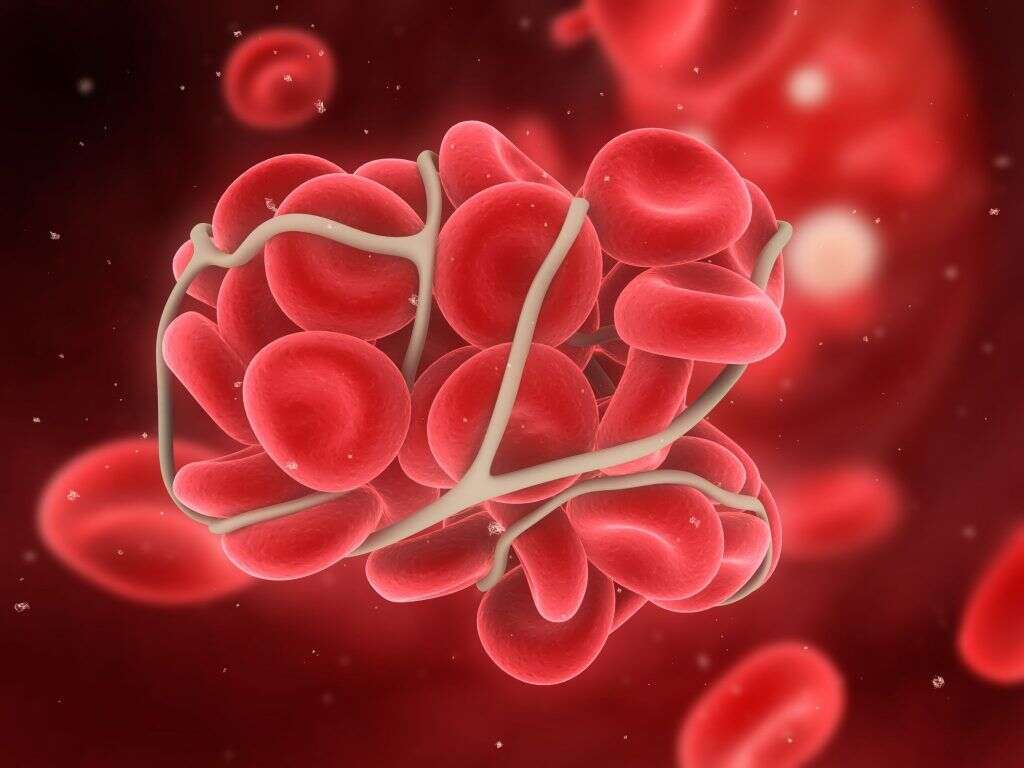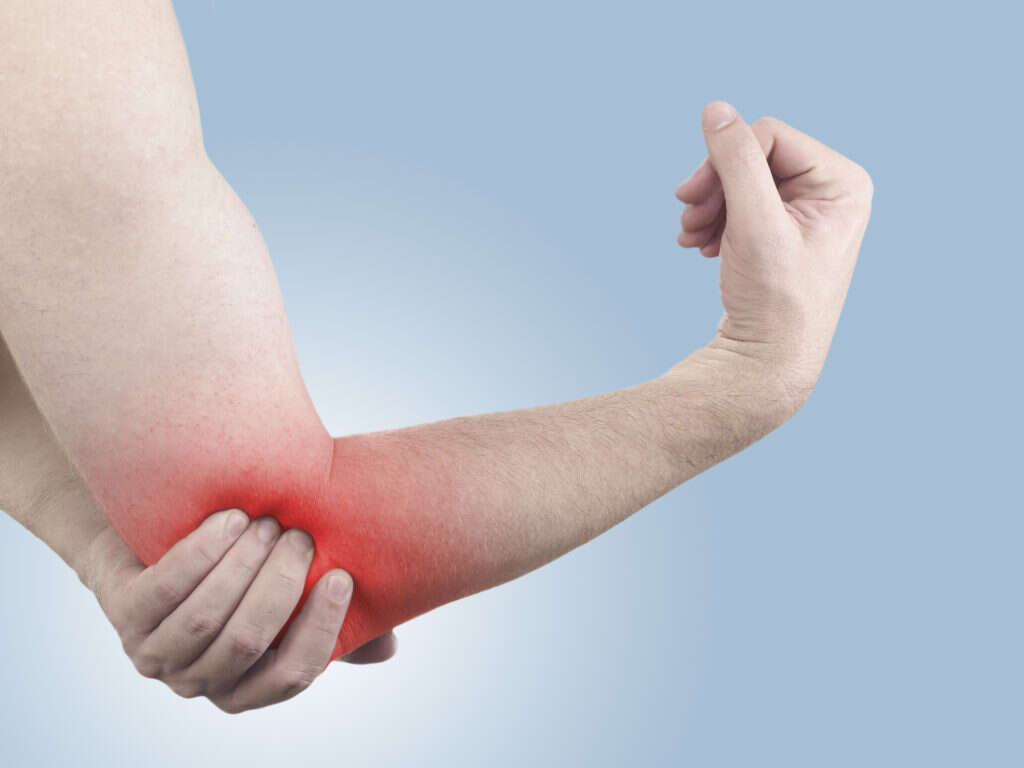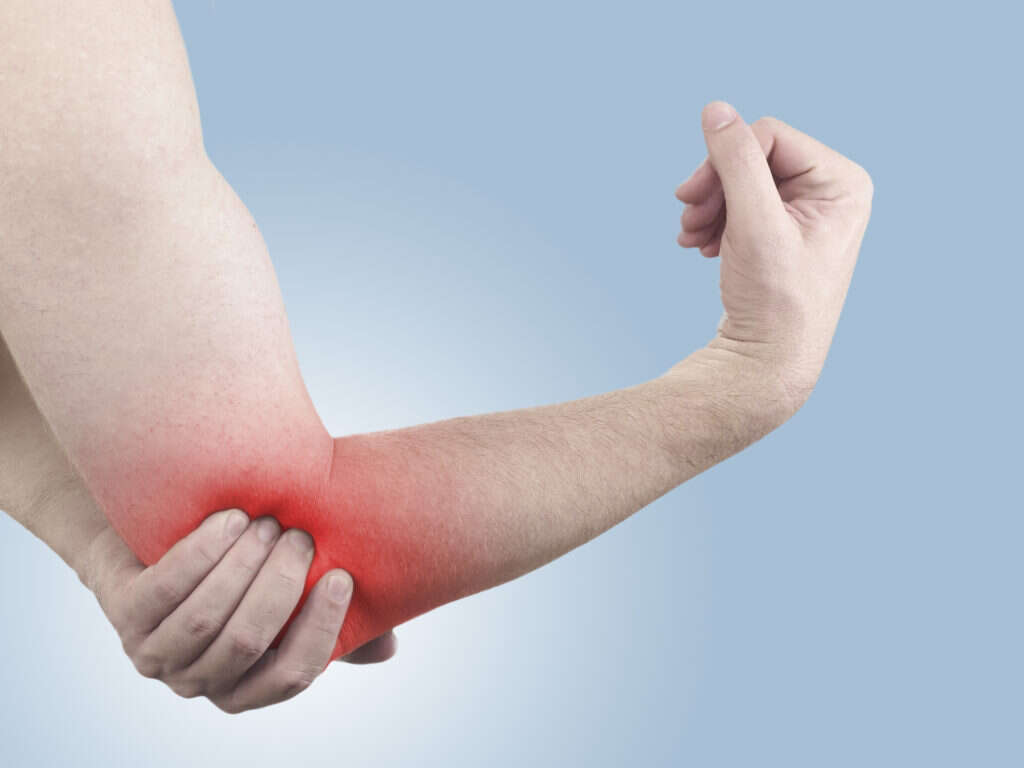10 Dislocated Elbow Symptoms
The elbow is a joint formed where the upper arm bone meets with the forearm bones. An elbow dislocation occurs when the radius and/or ulna bones of the forearm dislocate from their place against the humerus bone of the upper arm.
Elbow dislocation is the most common type of dislocation in children. In adults, elbow dislocation is only second to shoulder dislocation. Trauma such as a fall is the most common cause of elbow dislocation.
An elbow joint dislocation may be complete or partial, called subluxation. In a complete elbow dislocation, the three bones disengage completely, while in a partial dislocation, the bones are only partially disengaged. Below are 10 dislocated elbow symptoms.
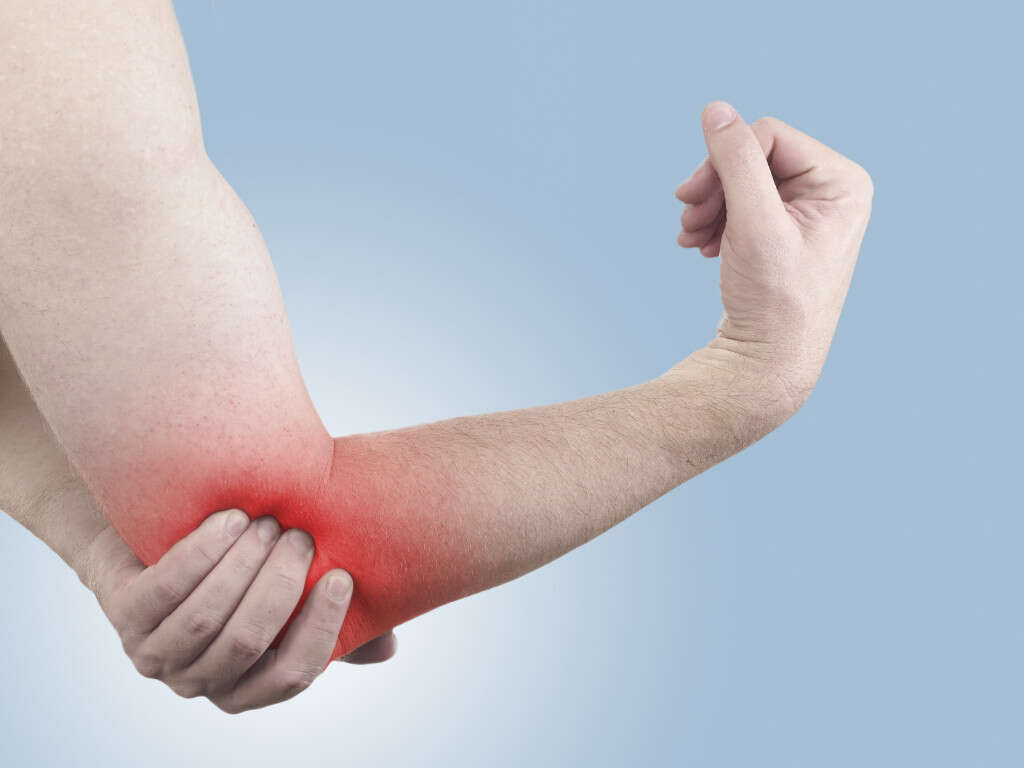
Symptom #1: Pain
Pain is one of the first symptoms of a dislocated elbow. The pain is usually worse when you move the elbow. For this reason, you are likely to hold your dislocated elbow in one place next to your body.
The amount of pain will also depend on the type of dislocation. A complete dislocation, in which all the three bones constituting the elbow joint come apart, can lead to the pinching of nerves traveling across the elbow. This can cause excruciating pain. It is always a good idea to visit the emergency department if you suffer a dislocated elbow. Meanwhile, you can take an over-the-counter anti-inflammatory like ibuprofen to reduce the pain.
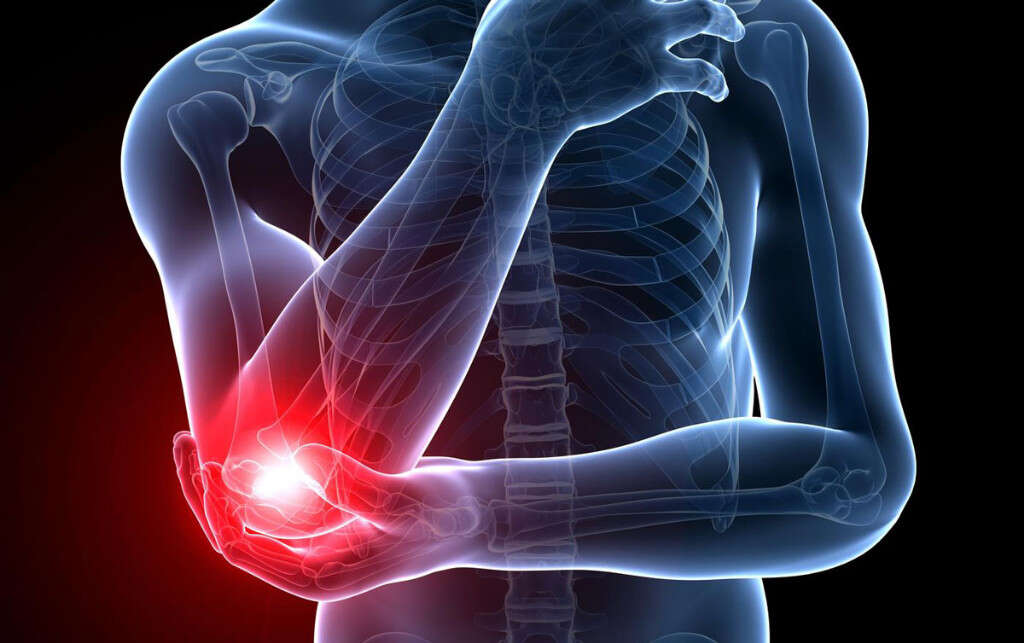
Symptom #2: Swelling
Swelling around the elbow after a fall or a serious blow is another sign of a dislocated elbow. Dislocation causes joint instability, which affects the elbow bones, ligaments, blood vessels, and nerves. It may also cause injury in these tissues. Injury can cause leakage of blood, synovial fluid, and other body fluids, and their collection in the tissues within the elbow. This leads to inflammation as the body’s immune system works to protect the body from further damage.
Because of the inflammation and collection of body fluid, swelling will usually occur around the elbow joint. If you suspect you or a loved one has dislocated an elbow, seek medical care promptly. This will make it easier for the doctor to examine and treat the elbow.

Symptom #3: Reduced Feeling
Reduced feeling below the dislocated elbow could also be a dislocated elbow symptom. This occurs in cases where the dislocation has caused severing or pinching of the nerves running across the elbow. Damaged blood vessels may also carry inadequate blood to the forearm and hand.
In such a state, the electrical signals carried through the nerves may leak along the way and, therefore, fail to reach the targeted tissues. As a result, and depending on which nerves and the extent of damage, parts of the forearm may have little or no feeling. To prevent this dislocated elbow symptom from becoming a permanent state, seek medical care without delay.

Symptom #4: Absence of Pulse in the Wrist
One more symptom of a dislocated elbow is the absence of pulse in the affected wrist. This happens when the injury interferes with the flow of blood, for instance when an artery is severely injured.
Consequently, blood flow through the injured artery may reduce significantly. When this happens to the main artery running through the wrist, it becomes difficult to feel the pulse on the wrist.
As mentioned elsewhere, it is important to seek medical care soon after dislocating an elbow. This will ensure that proper tests are conducted to determine the extent of damage so that you get the necessary treatment. Early treatment can prevent permanent damage.

Symptom #5: Muscle Spasms
The biceps and triceps are connected to the radius and ulna bones with tendons. However, when an elbow is dislocated, the tendons or even the muscles may be injured or even disconnected from the bones. Such injuries can cause the muscles to involuntarily tense or relax. This is how muscle spasms occur.
If, during dislocation, the tendon by which the bicep muscle is attached to the radius bone is severed, the bicep muscle will contract and form a ball in the middle of the upper arm. This can lead to arm weakness and pain. If a dislocation case is suggestive of such injury, surgical intervention is usually required. For this reason, you need to get to hospital without delay.
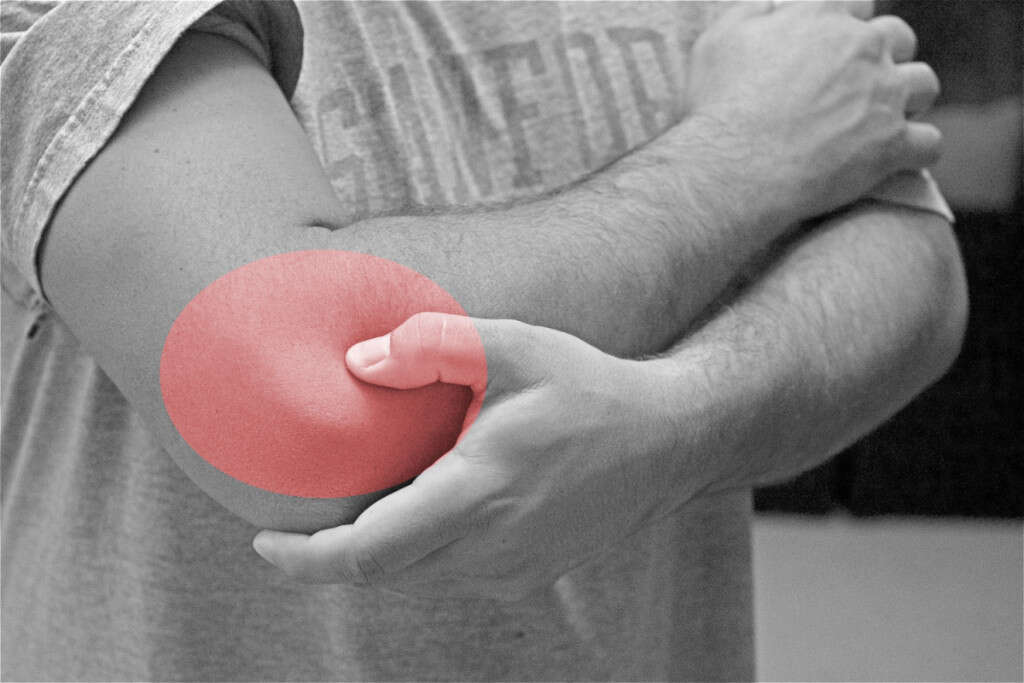
Symptom #6: Reduced Range of Motion
If after a fall or a blow to your elbow, you are unable to use the elbow as well as you could before, it is probably because you have a dislocated elbow. Dislocation of the elbow will usually lead to reduced range of motion. The disruption of the structural stability of the elbow due to dislocation causes some disability to perform.
This can arise as a result of pain, weakness, and poor coordination. The extent of the reduced range of motion will depend on the type of dislocation. In a complete dislocation, the elbow may be so painful that you cannot make any movement while movement is easier for a partially dislocated elbow.

Symptom #7: Needing to Support the Forearm
The instability caused by a dislocation of the elbow can leave the forearm needing continuous support. This is especially the case when the three bones are separated at the elbow. The forearm will feel like it is disjointed and any slight movement can cause extreme pain and discomfort.
It is unlikely that anyone would remain with this kind of dislocated elbow symptom. Once taken to hospital, the doctor will examine and order for an X-ray to determine the extent of damage and the necessary treatment. In case tendons or ligaments are torn from bones, surgery is normally indicated to reattach them.

Symptom #8: Distortion of the Arm
Inability to bend the elbow, or distortion of the arm, are symptoms of a serious dislocation of the elbow. If dislocation occurs as a result of overextending the elbow outwardly, the ulna and radius bones may be completely disengaged from the humerus. As a result, the arm may remain in an outstretched state with excruciating pain developing any time you try to bend the elbow or make any other movement with it.
This kind of dislocation can affect most of the other tissues located at or running across the elbow, including blood vessels, muscles, tendons, ligaments, and nerves. The best action to take is to have the patient lie down and call an ambulance. This will minimize movement of the arm to prevent further damage.

Symptom #9: Loss of Strength
Although a freshly dislocated elbow cannot perform as well as an uninjured elbow, elbow weakness is usually the result of an elbow dislocation that was not treated on time. Elbow dislocation will normally include ligament and muscle injuries. This leads to disuse of these tissues. Besides, the dislocation may cause some of these tissues to be partially or fully detached from the bones.
Left in such a state for long, proper coordination and use of these ligaments and muscles is lost. This leads to weakening of the elbow and reduction of its capacity to perform. To increase the chances of full recovery from an elbow dislocation, seek treatment as soon as possible.

Symptom #10: Stiffness
Stiffness in the elbow joint is one of the dislocated elbow symptoms that can occur if the injury remains untreated for long. The immune system is always working to heal injuries in the body. In the case of a dislocated elbow, injuries may occur on various surfaces, including bones, the elbow joint capsule, muscles, and ligaments.
In its quest to heal these injuries, the immune system may cause formation of scar tissue, thickening of the elbow capsule, and calcification of muscles and ligaments. Any of these can interfere with the elbow’s movements and lead to stiffening of the joint. You can avoid this eventuality to a great extent by getting your dislocated elbow fixed without delay.






